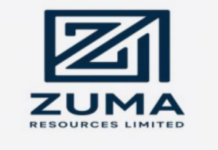If the China-Pakistan Economic Corridor (CPEC) is the crown jewel of China’s Belt and Road Initiative, then Gwadar can be described as the holy grail of CPEC. Given the economic and strategic importance associated with Gwadar, one could argue that a transformation of the city and its economy would, by extension, signal the realization of the promise and potential of CPEC. And if the promise and potential of CPEC is realized, then Pakistan’s economy would be transformed for the better, leading to sustainable and inclusive growth coupled with integration with the broader region and the global economy.
However, the pursuit of this strategy has led successive governments, civilian and military, to focus on a top-down developmental model that is exposing and exacerbating the shortcomings of the Pakistani state. These capacity gaps, when paired with a developmental strategy that is disconnected from local realities, is the reason why Gwadar has a lush green cricket outfield but limited to no access to clean drinking water for the citizens of the city. While celebrities, influencers, and political elite post pictures of pristine beaches, life for those on the ground in Gwadar remains challenging at best. Which is why there was a weeks’ long protest in the city, with citizens demanding access to clean water and protection of their livelihoods, especially those related to the fishing industry.
It goes without saying that the geoeconomics pivot is an important and much-needed pivot. However, we must scrutinize this pivot for its alignments with the economic realities and potential of Pakistan, and then assess Gwadar’s role in meeting this potential. Take for example the World Bank’s research suggesting that the total export gap for Pakistan is over $60 billion. This, on surface value, shows that if the geoeconomics pivot is successful, Pakistan’s exports would dramatically rise, creating millions of well-paying jobs, eliminating chronic external sector crises that Pakistan faces, and accelerating the achievement of key human development goals.
Digging a little deeper into this World Bank analysis highlights that the real potential for the geoeconomics pivot lies through the oceans, not the heartland of Central Asia. Almost $25 billion of the potential can be realized through three key markets: China ($13.3 billion), the United States ($5.8 billion), and Japan ($4.2 billion). Other key markets with untapped potential are Italy ($1.3 billion), Indonesia ($1.3 billion), and France ($1.3 billion). It is also worth pointing out that India has a potential of $12.7 billion and overland trade with India would deliver immense benefits; however, realizing this potential in the near-term is an unlikely scenario given Pakistan-India relations.
In comparison, Central Asian heartland represents a tiny opportunity, with Uzbekistan and Kazakhstan combined offering a potential of under $1 billion. That opportunity can only be unlocked through peace and stability in Afghanistan, and as recent weeks have shown, rising violence on the border with Afghanistan makes the realization of this potential an unlikely scenario in the immediate future. The security challenge from Afghanistan and beyond is nothing new: for centuries armies, not wealth, have flowed from west of the Khyber Pass into the subcontinent. And this security issue has plagued Pakistan from its very early days. It is worth noting that the first Memorandum of Understanding (MoU) between Pakistan and Turkmenistan to develop a natural gas and oil pipeline was signed in March 1995. Almost thirty years later, this pipeline remains a pipedream. It is also worth pointing out that the terms of trade from Central Asia are likely to be skewed against Pakistan, primarily because Pakistan would be importing dollar-denominated energy and selling agricultural and manufactured goods like textiles in return. This means that the country would eventually need additional inflows of dollars from other markets to pay for its energy imports.
China is a strategic ally and a key market for Pakistan. However, the purchasing power of the country is based on its eastern seaboard, not Xinjiang; fulfilling the $13 billion export potential would require Pakistan to send its goods through the oceans to ports in eastern China. Additionally, realizing the strategic economic opportunity on offer through CPEC requires Pakistan to address its own internal shortcomings. These shortcomings are forcing China to hedge against Gwadar, as evidenced by its engagement with Iran, including on the port of Chabahar.
The country’s current major trading partners are currently accessed through the seas and there is tremendous upside on offer by investing in realizing the missing potential. This is a sentiment shared by others, including leading corporate executives, who believe that a robust maritime strategy is sorely needed. Gwadar will be a core part of this strategy, but the port must be reimagined as a transshipment hub that complements Karachi. In addition, investments in modernizing the existing economy in Gwadar by building relevant infrastructure, starting with fishing, should be the priority. This can increase incomes for local fishermen by exporting value-added seafood to the world, starting with the Gulf, and generate increased economic activity that can justify further investments in the future. Pakistan’s geoeconomic pivot must weigh heavily towards the oceans, and investments must be made in core infrastructure necessary to meet the country’s export potential.























It would be relevant, if Uzair can also invite industry (Corporate/SMEs) leaders and also listen to their view points including ‘Is it cost effective to send the cargo to the target markets via Gwadar or Karachi remains a better option?’. Also what other advantages / disadvantages can Gwadar provide to the local businessmen. We cannot continue to wait for Chinese factories to start manufacturing in Gwadar in absence of the local labour force or other essential living requirements and make Gwadar an export hub when the locals are not doing the same. Also when will the local city grievances be addressed?
what is wbm road
polycarbonate insulated conservatory roof
Nice article written by uzair yunus